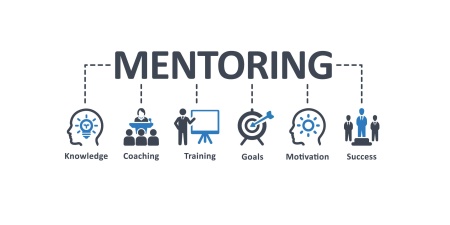Digital transformation involves the strategic adoption of new technologies in the marketplace. It’s used to improve processes and productivity, deliver better customer and employee experiences, manage business risk, and control costs. Myriad tools, solutions, and processes are used in digital implementation and today, we are all unavoidably part of the transformation.
With past experience in helping to grow a distributor business from $10M to $65M, I am now a consultant to small and mid-size businesses (SMBs). I find that digital transformation can seem daunting to this group. Smaller companies often feel they are at a competitive disadvantage to larger distributors, who have deeper pockets to fund digital investments.
It’s true —an integrated enterprise resource plan (ERP) can be expensive, but costs are coming down. The pandemic accelerated the development of digitalization. This increased demand for digital tools will drive down the cost of implementation. Look at how prices fell as demand for flat screen TVs/monitors, smart phones, and computers grew.
Rather than feeling disadvantaged because you have fewer tangible resources than your larger competitors, lean on your strengths. SMBs are more agile and have the ability to react faster to their customers’ needs. Use that to your advantage.
The Wolf at the Digital Door
Artificial Intelligence (AI) is the wolf at the distributor’s door. It enables alternative channels to directly compete with your offerings. As an example, I recently needed to replace a pair of faucets as part of a home renovation project. I went to the website of the local supplier recommended by my contractor. When I typed in the stock number on that site, I received a drop down from a national supplier with a 20% price reduction, 10-day delivery, no delivery charge, and an additional 10% discount as a first-time customer. By merely entering a stock number on a company’s website, its competitive suppliers had access to the request! This is enabled by AI and the adoption of this technology is moving rapidly. Distributors need to have a strategic plan to offset this challenge.
Deploy Simple Digitalization
Look for new ways to innovate. Distributors have focused on best practices to remain competitive and these are valuable. However, Mark Dancer, CEO of Network for Business Innovation, cautions that best practices are not implementable, proven solutions but merely ways of catching up with what others are doing. Similarly, continuous improvement is about getting really, really good at what you already do. Combined, best practices and continual improvement do more to lock existing business models in place than to help companies leap forward with game-changing innovations.
To innovate, SMBs need to start by deploying simple digitalization of their data and workflow, such as inventory management, receiving, picking, packaging, and shipping. Begin by training your workers with dependable, mobile computers that improve daily activities.
I am working with a small distributor who is taking a first step by giving all employees mobile computers and, depending on their roles, barcode scanners, radio frequency identification (RFID readers) and mobile printers. Amanda Honig, Regional Portfolio Manager for Zebra in North America, explains in a recent issue of Industrial Distribution, “This [mobile devices] is the fundamental ‘digital’ toolset in today’s distribution and warehousing environment. They can quickly locate, pick, and pack parts and equipment, report findings of visual quality inspections, and notify stakeholders when things are on the move to the next destination – whether that’s a shelf bin, packaging line, loading dock, or customer.”
Hire an Integrator
It is important for SMBs to recognize the key advantages they have with their customers. With a proven history of delivering products, SMBs enjoy established working relationships based on trust. They also have the ability to communicate face-to-face in times of crisis. In addition, they have in their computer the history of purchases in a digital format. To take advantage of this data, a company needs to incorporate an ERP integration that will tie together customer service (ordering, pricing and product knowledge), operations (order tracking and warehouse inventory control), administration (order processing and bill paying), sales (prospecting, customer products, history, and purchases), and marketing (website, advertising, merchandizing, social media, research and training).
Hire an integrator to empower your distributorship with AI technology and services, at a price point you can afford. This will protect your business by enabling you to compete head on in the digital world and win against your bigger online competitors.
With AI, your sales reps can be directed to prospects that most warrant their attention. Benj Cohen founded Proton, a company that helps distributors harness artificial intelligence. He writes in an article posted by the Distribution Strategy Group, that AI offers predictions based off of previous transactions and customer history. These predictions provide insight into what customers will buy, when and how often, and where they’ll make their purchase. Reps can leverage this information to make more informed pitches as well as up-sell and cross-sell products. This insight also ends up adding value to the customer experience.
Unified Commerce
Dean Mueller, an author at Distribution Strategy Group, reports in his article Customers Want a Better Experience. Enter: Unified Commerce, “Distributors have placed their highest priority in the past few years on improving the customer experience (CX) across all channels.”
B2B buyers continue to buy from suppliers who provide consistent services: information, pricing, product availability, and on-time delivery. Providing personal phone responses, local stores, and face-to-face sales and service are still major factors in buying decisions.
Mueller explains how unified commerce differs from other sales channels in this way:
- A single channel is characterized by just one touchpoint where a customer interacts with a business, as opposed to an online marketplace with multiple customer touchpoints.
- A multichannel business operates across channels, including an online presence, price catalog or physical branch/store. Pricing often varies, and inventory is managed separately from each branch.
- An omnichannel experience occurs where the customer interacts with each channel often using different systems. The disparate systems make it difficult or impossible to have a real-time synchronization.
- Unified commerce is the next evolution of omnichannel selling. A customer journey has multiple touchpoints, each of which taps into the same data and information source in real time. It unifies commerce and is the foundation for exceptional customer experiences.
A Better Buying Experience
With unified commerce, Mueller explains, your order management process has the pertinent information in an easy-to-use interface. This enables a typical quote/transaction with the customer to be completed quickly and efficiently, without error. The payoff is an increased quote-to-order ratio for the distributor and a good experience for the customer.
Here are the capabilities embodied in unified commerce that enable service improvement:
- Customer-specific pricing – Regardless of the channel, a customer will have access to correct and up-to-date pricing specific to their account.
- Comprehensive inventory search capabilities – Full transparency into product availability across all locations is available to service customers.
- Configurable materials – A product can be built or configured with specific attributes and/or calibrations.
- BOMS and kitting – B2B customers with complex orders need the capabilities of having a complete Bill of Material (BOM) and kitting.
- Other capabilities include: Cross-selling and up-selling, integrated procurement capabilities, advanced quoting and bidding, master contracting and subcontracting management, service management, advanced returns management, order splitting, and advanced payment features.
Key Values
SMBs rely on added value to compete against bigger companies. Unified commerce can bring a distributor three key values:
- Low TCO (total cost of ownership). Increased customer loyalty resulting from the factors discussed above can have a big positive impact on revenues.
- Increased sales and margin. Unified commerce is efficient and therefore saves time. This gives reps more time to sell, along with cross-sell and up-sell opportunities.
- Increased business process agility. Unified commerce allows for companies to speed up the time it takes to make a store more productive or to open a new branch. It also presents additional channels for customers to interact with the organization.
Drive Business Forward
I conclude with these insights from Mark Dancer: “By helping customers, distributors help themselves. Customers need to evolve for the digital age, but like distributors, many customers are uncertain about the future. By developing expertise around how customers will do business and helping them transform, distributors will drive their businesses forward.”









